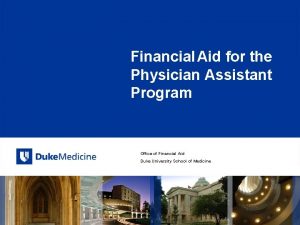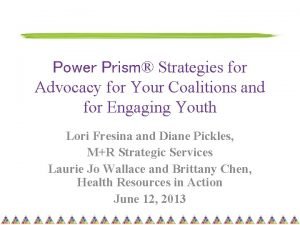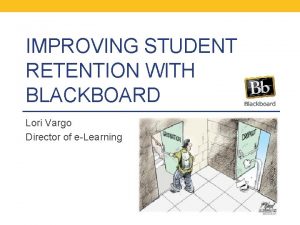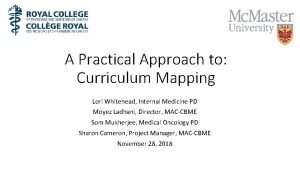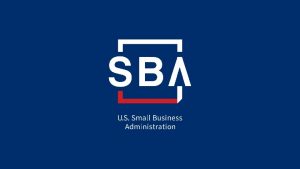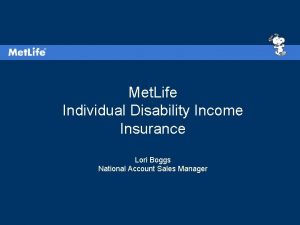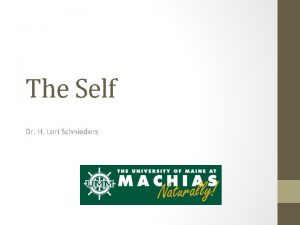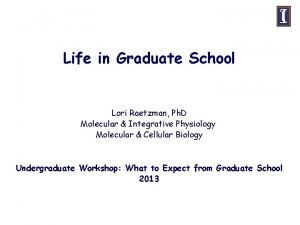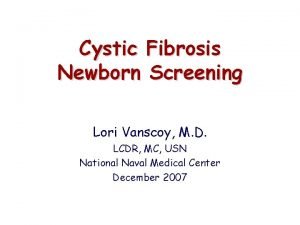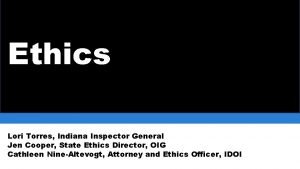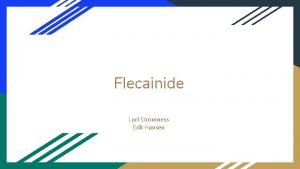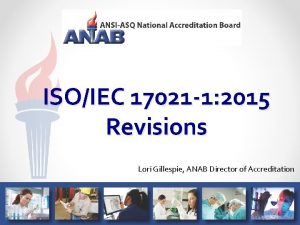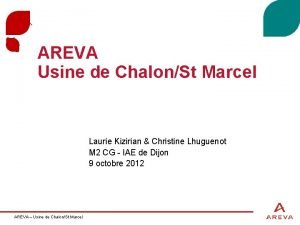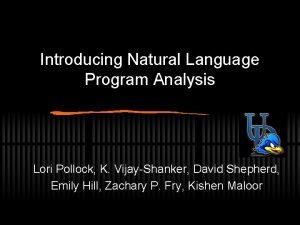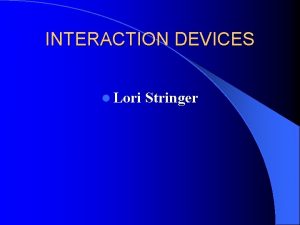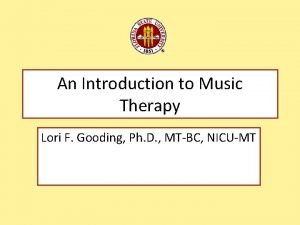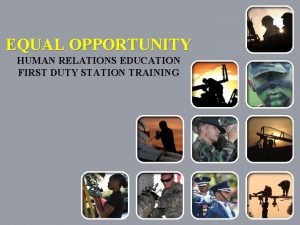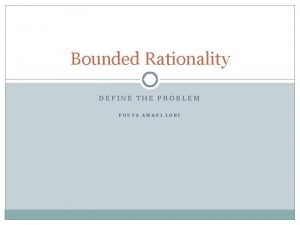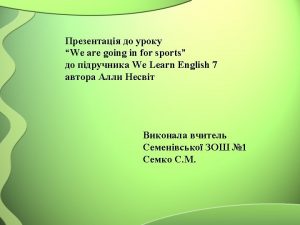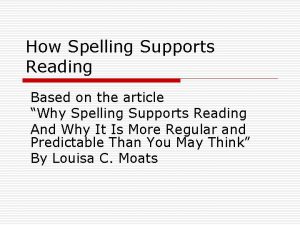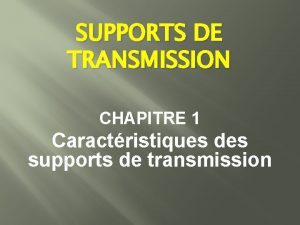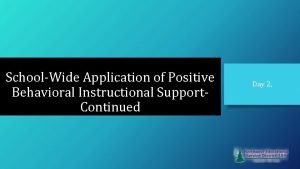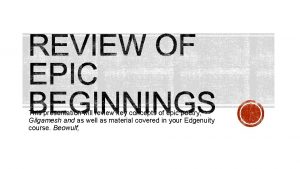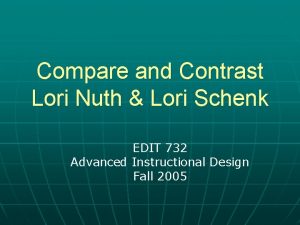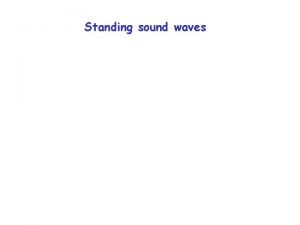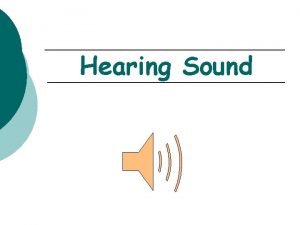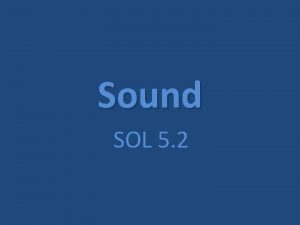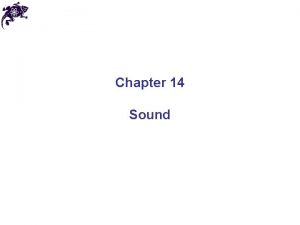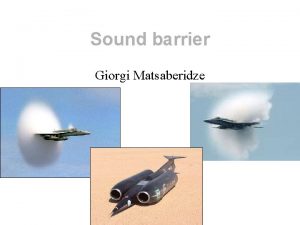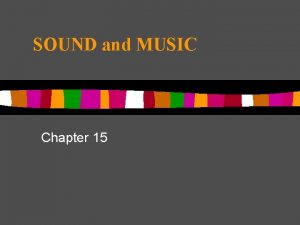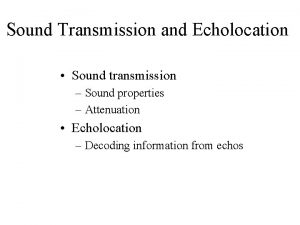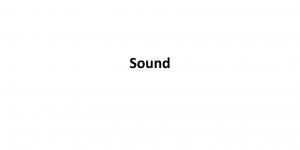ADVANCED RJP Carol Frodge Lori Lynass Sound Supports







































- Slides: 39

ADVANCED RJP Carol Frodge & Lori Lynass Sound Supports, LLC www. soundsupportsk 12. com

OBJECTIVES • Quick Review of basic RJP • Supporting Students Who Have Been Harmed • Addressing Students Who Have Harmed • Re-Entry Circles

OPENING CIRCLE

PARTICIPATION GUIDELINES ØRespect the talking piece: everyone listens, everyone has a turn. ØSpeak from the heart: your truth, your perspectives, your experiences. ØListen from the heart: let go of stories that make it hard to hear each other. ØTrust that you will know what to say : no need to rehearse. Ø Say just enough: without feeling rushed, be concise and considerate of the time of others.

WHAT IS WORKING & WHAT IS NOT? • Share what RJ practices you have had success with. • What has not been working? • What barriers have you run into? • Practice Active/Reflective Listening

RESTORATIVE PRACTICES Restorative practices cultivate a culture in which everyone feels like they belong. They build a particular sense of community in which every member--students, teacher, parent volunteers, aides--feel that they are seen, heard, and respected. • Amos Clifford

PUNISHMENT VS DISCIPLINE Punishment or consequence works as an immediate way to try and get a behavior to stop and to “make the child pay” for what has occurred. Discipline defined means teaching, learning and giving instruction. Discipline offers skills that can change behavior. It can help the developing brain make connections about good choices. We want to respond, not react.

ALTERNATIVE APPROACHES TO ADDRESS BEHAVIOR • Data on repeat exclusion rates, suggests that school discipline does not result in changes to student behavior. • However, emerging research shows incorporating restorative practices into school environments and helping students develop the social and emotional skills to cope with adversity can reduce the types of behavioral incidents that result in exclusion.

REDUCING DISPROPORTIONALITY Our young people, especially lower income urban children of color, are being excluded from healthy educational opportunities. Many feel unwelcome in schools intended to serve them, schools that lack resources and rely on zero tolerance policies and punitive practices.

DOES RJ AFFECT DISPROPORTIONALITY? • Study of 13 schools showed that school using RJ reduced suspensions for African American students by 4. 5%, while non-RJ schools actually increased suspensions by 1%. • Using RJ contributed to students being able to tell their stories, be seen as human and increase understanding • Simson 2012, UCLA

CHARACTERISTICS OF RESTORATIVE SCHOOLS üEducators are models of restorative practice üSchool promotes an ethos of care üFocus on relationships first, rules second üAdults and students work to understand the impact of their actions üSchool policies and practices focus on restoration • Conflict resolution • Flexible policies including differentiated discipline Jeff Sprague


• Dominic Barter plays with dialogue and partnership, focusing primarily in the fields of education, justice, culture and social change. In the mid 90 s he collaborated in the development of Restorative Circles, a community-based and -owned practice for dynamic engagement with conflict that grew from conversations with residents in gang-controlled shantytown favelas in Rio de Janeiro. • He adapted the practice for the Brazilian Ministry of Justice’s awardwinning national projects in Restorative Justice and supports its application in a further 25 countries. In recent years he has supervised the mediation program for the Police Pacification Units in Rio, served as invited professor at the Standing Group for Consensual Methods of Conflict Resolution, at the High Court of Rio, with a focus on school mediation and bullying, and focused on the development of restorative community. • Currently Dominic directs the Dialogue Restoration project for the State Education Department of Rio de Janeiro and partners with the Centre for the Study of Public Security and Citizenship at Candido Mendes University.

High To With Control (limit setting, discipline) Not Low For Support Encouragement, nurture High The Restorative Practices Handbook by Bob Costello, Joshua Wachtel and Ted Watchtel SOCIAL DISCIPLINE WINDOW

Your Task In each box write the description of what that box represents. For example: High support and low control

High To Punitive Control (limit setting, discipline) Restorative Not Neglectful Low With Support Encouragement, nurture For Permissive High The Restorative Practices Handbook by Bob Costello, Joshua Wachtel and Ted Watchtel SOCIAL DISCIPLINE WINDOW

Your Task Think of a time this year when you think you acted in either the FOR or the TO boxes in response to a student behavior. 1. What happened? (What was the student behavior? ) 2. How did you respond? 3. What was the outcome?

Your Task Think of a time this year when you think you acted in the WITH box in response to a student behavior. 1. What happened? (What was the student behavior? ) 2. How did you respond? 3. What was the outcome?

SOCIAL DISCIPLINE WINDOW High Control (limit setting, discipline) With Power Struggles Consistent Accountable Confrontation Responsive /Flexible Authoritarian Win/Lose Responsible Retribution Cooperation Stigmatize Negotiation Not For Uncaring Tired Lazy Burned Out Given Up Chaotic • Inconsistent • Excusing • Giving In • Blurred Boundaries • Rescuing Low Support Encouragement, nurture High Fisher and Frye: Creating a Culture of Achievement TO

FAIR PROCESS Individuals are most likely to trust and cooperate freely with systems- whether they themselves win or lose by those systems- when fair process is observed. Fair Process: Managing in the Knowledge Economy: Chan Kim and Renee Maugorgne, Harvard Business Review January 2003.

CORE COMPONENTS OF FAIR PROCESS: • Engagement • Explanation • Expectation Clarity

CORE COMPONENTS OF FAIR PROCESS: Engagement: Involving individuals in decisions that affect them by asking for their input and allowing them to refute the merit of one another’s ideas. Fair Process: Managing in the Knowledge Economy: Chan Kim and Renee Maugorgne, Harvard Business Review January 2003.

CORE COMPONENTS OF FAIR PROCESS: Expectation Clarity: Once decisions are made, new rules are clearly stated, so that everyone understands the new boundaries and consequences of failure. Fair Process: Managing in the Knowledge Economy: Chan Kim and Renee Maugorgne, Harvard Business Review January 2003.

CORE COMPONENTS OF FAIR PROCESS: Explanation: Everyone involved and affected should understand why final decisions are made as they are. Creates powerful feedback loop that enhances learning. Fair Process: Managing in the Knowledge Economy: Chan Kim and Renee Maugorgne, Harvard Business Review January 2003.

Your Task Discuss how the examples you used earlier met or didn’t meet the core components of Fair Process.

CORE COMPONENTS OF FAIR PROCESS: • Engagement • Explanation • Expectation Clarity

RESTORATIVE PRACTICES CONTINUUM Informal Affective Statements Formal Affective Questions Small impromptu conference Group or Circle The Restorative Practices Handbook by Bob Costello, Joshua Wachtel and Ted Watchtel Formal Conference

AFFECTIVE STATEMENTS Typical Response Affective Response Stop teasing Sandy. I feel uncomfortable when I hear you teasing Sandy. Talking during class is inappropriate I am frustrated that you aren’t listening to me. I feel sad when you say something like that to John. You shouldn’t do that. Sit down and be quiet. I feel angry when you talk and joke during my lectures. I don’t want to see you fighting with him. I was shocked to see you hurt Pete.

GROWING CAPACITY – RESOURCE GUIDE


PERSON WHO WAS HARMED CIRCLE • https: //www. youtube. c om/watch? v=Dq 7 OS m 7 IOFY • Restorative Justice at Mountain View Alternative High School

RESTORATIVE PRACTICE: PERSON WHO HARMED • What happened? • What were you thinking about at the time? • What have you thought about since the incident? • Whom do you think has been affected by your actions? In what way? • What do you think you need to do to make things right?

RESTORATIVE PRACTICE: PERSON WHO WAS HARMED • What did you think when you realized what had happened? • What effect has this incident had on you and others? • What has been the hardest thing for you? • What do you think needs to happen to make things right?

DEBRIEF • Debrief with your group how you think your circle went. Be ready to report out one positive to the whole group.

LUNCH

LARGE CIRCLE ADDRESSING MAJOR INCIDENT GROUPS OF 7 -8

REENGAGEMENT MEETINGS AND PLANS ARE CRITICAL TOOLS • Without required reengagement meetings and reengagement plans, families have few clearly-defined rights when advocating for their children and little chance of reducing the length of exclusions or transitioning students back to academic success. • In turn, this will reduce some of the most negative impacts of exclusionary discipline, such as drop out and push out.

RE-ENTRY CIRCLES https: //www. youtube. com/watch? v=u. SJ 2 GPiptvc Restorative Welcome and Re-entry Circle Bunchy High School, Oakland

CLOSING CIRCLE
 Lori lynass
Lori lynass Duke pa program tuition
Duke pa program tuition Lori fresina
Lori fresina Lori simon-rusinowitz
Lori simon-rusinowitz Blackboard uscb
Blackboard uscb Curriculum mapping template
Curriculum mapping template Maximo lori
Maximo lori Jody lori
Jody lori Lori gillen sba
Lori gillen sba Lori boggs
Lori boggs Lori marsh
Lori marsh Lori cabrera
Lori cabrera Florida doci
Florida doci Nn roth
Nn roth Lori carl
Lori carl Lori raetzman
Lori raetzman Trishna and krishna
Trishna and krishna Lori hanson dnr
Lori hanson dnr Lori blevins
Lori blevins Cystic fibrosis irt
Cystic fibrosis irt Lori torres indiana
Lori torres indiana Lori stromness
Lori stromness Lori gillespie
Lori gillespie Lori leiter
Lori leiter Organigramme alstom le creusot
Organigramme alstom le creusot Jbid watcher
Jbid watcher Lori stringer
Lori stringer Lori kempe
Lori kempe Lori gooding
Lori gooding Lori k grimes hill afb
Lori k grimes hill afb Lori bounded
Lori bounded “a sound mind is in a sound body”
“a sound mind is in a sound body” Speed of sound through steel
Speed of sound through steel How spelling supports reading
How spelling supports reading Descriptor table in 80386
Descriptor table in 80386 Support de transmission
Support de transmission Supports the body
Supports the body Positive behavioral interventions and supports
Positive behavioral interventions and supports Christianity vs paganism chart
Christianity vs paganism chart What are the components of accenture delivery suits
What are the components of accenture delivery suits

